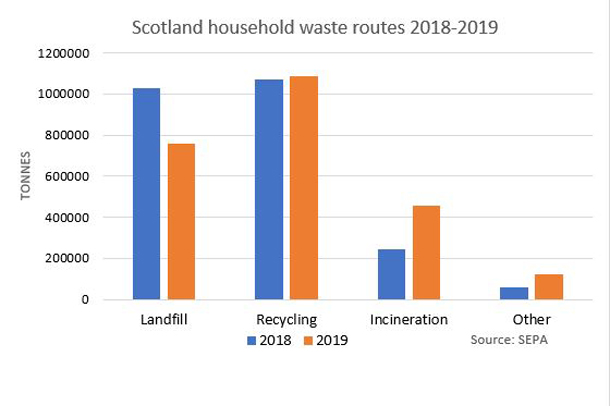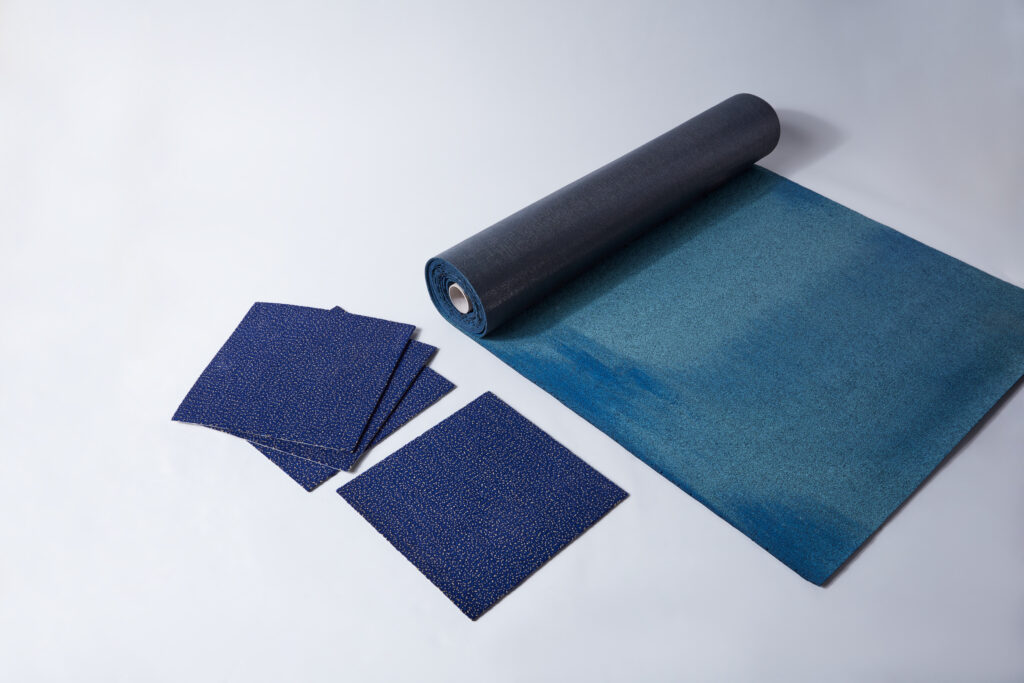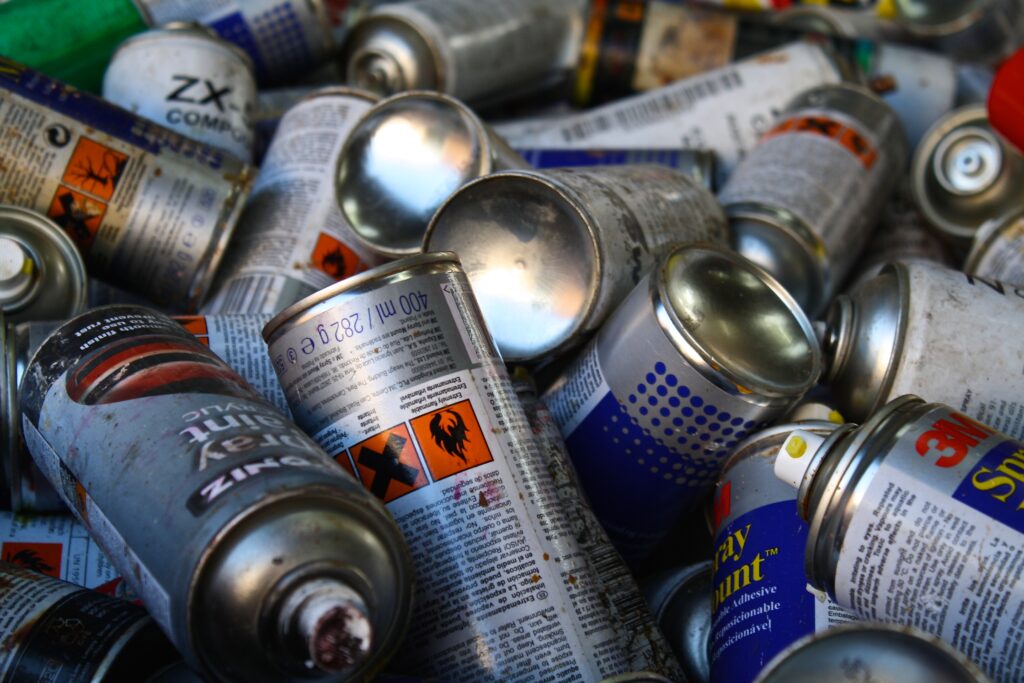Scotland’s overall household waste recycling rate was 44.9% in 2019, an increase of 0.2 from 2018 and 5.4% up from the 39.5% achieved in 2011. But it remains below the 2017 rate of 45.5%. The highest performing local authority was East Renfrewshire at 67.8% and the lowest mainland recycling figure was reported by Glasgow at 24.7%.
In the household waste summary for the calendar year 2019, SEPA reported a further decrease of household waste sent to landfill in Scotland, down 26%, or 273,000 tonnes, from 2018.
Decrease
SEPA noted that this was the eighth consecutive decrease of household waste landfilled since 2011 and the third consecutive year there was more Scottish waste recycled (1.1 million tonnes) than landfilled).
The report added that the total volume of household waste generated in Scotland remained “largely the same as 2018”, up 17,000 tonnes (an increase of 1%) from 2.41 million tonnes in 2018 to 2.42 million. A total of 454,000 tonnes of waste was incinerated, up substantially from 240,935 tonne the year before.
Carbon impact

According to the report, the carbon impact of Scottish household waste “continues to decrease” showing a “continued downward trajectory since 2011”.
SEPA said that this is largely due to increased recycling rates, particularly for high impact waste materials, as well as reductions in waste generated and reduced landfilling of biodegradable waste.
The carbon impact of household waste generated and managed in 2018 was 5.7 tonnes of carbon dioxide equivalent, which is 1.0 tonnes per person.
There was also a decrease of 94,000 CO2e from 2018 and a decrease of 1.1 million from 2011.
Holistic view
SEPA explained: “The Scottish carbon metric measures the whole-life impact of resources. A measure of national performance, the metric takes a holistic view, from resource extraction and manufacturing emissions, through to resource management emissions.”
“The Scottish carbon metric measures the whole-life impact of resources”
“Measuring the true impact of waste and waste management is most accurate when viewed in terms of emissions. This is measured in carbon dioxide equivalent (CO2e). This provides a more accurate picture than merely looking at tonnage (glass weights a lot more than paper), and takes into account the emissions created when waste is disposed of, whether through recycling, incineration, composting, anaerobic digestion or being sent to landfill.”
Plastic, glass, paper and cardboard
Plastic recycling rose by 1,000 tonnes (1%) to 57,379 tonnes in 2019, which continues a trend of increasing each year for the last eight years.
SEPA noted that glass remains the second most recycled material, with 107,000 tonnes, similar to 2018.
Paper and cardboard as a whole remains the largest volume of material recycled at 192,562 tonnes.
However, SEPA said that there has been a “general downward trend” of paper and cardboard wastes recycled –in 2018 was down 17,000 tonnes (8%) – a 48,000 tonne (20%) reduction since 2011. And the agency reported that segregated paper waste is in “continual decline”, while cardboard and mixed paper and cardboard wastes have remained constant or increased over time.
SEPA commented: “This may be partly due to replacement of segregated paper collections with mixed paper and cardboard collections. It is also likely that a move away from print media to electronic media has decreased paper waste, while cardboard wastes have not decreased on the same scale, which could be a result of increased packaging materials as consumer habits move online.”












Subscribe for free